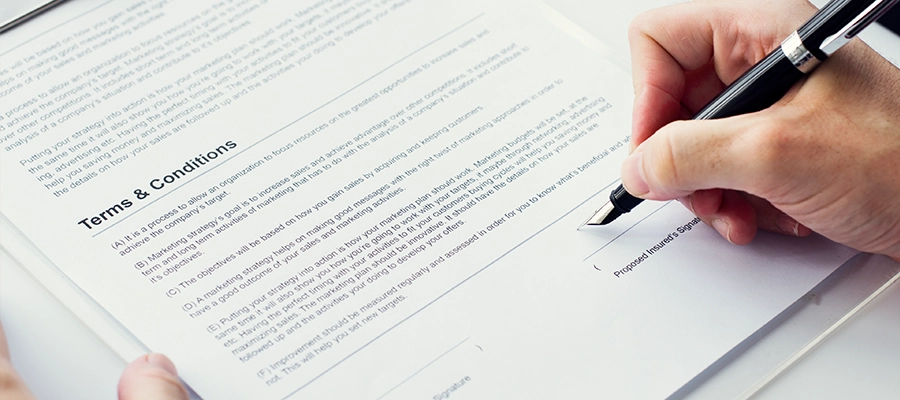Quick Summary
Registering a trademark in India is crucial for businesses aiming to protect their brand identity and gain a competitive edge. A registered trademark grants exclusive rights to the use of the mark, preventing unauthorized usage by others. It also provides legal protection against infringement, allowing the owner to initiate legal proceedings if necessary. Moreover, a registered trademark enhances brand recognition and trust among consumers, distinguishing products or services from competitors. This legal safeguard not only secures the brand’s reputation but also contributes to its long-term success in the market.
Blog Content Overview
In today’s competitive business landscape, protecting intellectual property is crucial for building a strong brand and maintaining a competitive edge. Trademark registration is one of the most effective ways to safeguard your brand’s identity, ensuring that it remains unique and protected from infringement. In India, where the economy is booming with startups, small businesses, and large corporations alike, understanding the importance of trademark registration is paramount.
What is a Trademark?
A trademark is a unique symbol, word, phrase, logo, design, or combination thereof that identifies and distinguishes the goods or services of one entity from others. It is a vital aspect of branding and helps create a distinct identity in the minds of consumers.
For instance, iconic logos like the golden arches of McDonald’s or the swoosh of Nike are registered trademarks that symbolize their respective brands globally. Similarly, Indian brands like Tata, Reliance, and Flipkart rely heavily on trademarks to maintain their market dominance and consumer trust.
Why is Trademark Registration Important in India?
1. Legal Protection Against Infringement
Trademark registration provides legal protection under the Trademarks Act, 1999. If another business attempts to use your registered trademark without authorization, you can take legal action against them. This protection ensures that your brand’s identity remains intact and safeguarded.
2. Exclusive Rights
A registered trademark grants the owner exclusive rights to use the trademark for the goods or services it represents. It also prevents competitors from using similar marks that could confuse consumers.
3. Brand Recognition and Goodwill
A trademark acts as an asset that enhances brand recognition and builds consumer trust. Over time, a strong trademark becomes synonymous with quality and reliability, which contributes to long-term goodwill.
4. Market Differentiation
In a saturated market, a trademark helps distinguish your products or services from those of competitors. It establishes your brand’s unique identity and strengthens customer loyalty.
5. Asset Creation
A registered trademark is an intangible asset that can be sold, licensed, or franchised. This adds financial value to your business, making it an attractive proposition for investors or partners.
6. Global Expansion
Trademark registration in India can serve as the foundation for international trademark registration under treaties like the Madrid Protocol. This is especially important for businesses planning to expand globally.
Consequences of Not Registering a Trademark
Failure to register a trademark can expose your business to several risks:
- Risk of Infringement: Without registration, proving ownership of a trademark becomes challenging.
- Brand Dilution: Competitors might use similar marks, leading to loss of distinctiveness and consumer trust.
- Limited Legal Remedies: Unregistered trademarks are harder to defend in court.
- Missed Opportunities: A lack of trademark protection can hinder global expansion plans.
Steps to Register a Trademark in India
- Trademark Search: Conduct a thorough search to ensure that the trademark is unique and not already registered by someone else.
- Application Filing: Submit a trademark application with the necessary details, including the logo, class of goods or services, and owner details.
- Examination: The Trademark Registry examines the application to ensure compliance with legal requirements.
- Publication: The trademark is published in the Trademark Journal to invite objections, if any.
- Registration Certificate: If no objections are raised, or if objections are resolved, the trademark is registered, and a certificate is issued.
Costs and Duration
Trademark registration in India is a cost-effective process. The official fees depend on the nature of the applicant, with reduced fees for startups, individuals, and small businesses. The registration process typically takes 12-18 months, but the protection is valid for 10 years and can be renewed indefinitely.
Key Industries Benefiting from Trademark Registration
- E-commerce and Retail: Trademarks protect brand identity in a highly competitive digital marketplace.
- Pharmaceuticals: Ensures safety and trust by preventing counterfeit products.
- Technology Startups: Safeguards innovations and unique business models.
- Food and Beverage: Builds trust and loyalty through distinctive branding.
Conclusion
Trademark registration is not just a legal formality but a strategic move to protect and enhance your brand’s value. In a thriving economy like India, securing a trademark ensures that your brand stands out, builds trust, and enjoys long-term growth.
Investing in trademark registration today is a step toward safeguarding your business’s future. Don’t wait for competitors to claim what’s rightfully yours. Secure your brand’s identity and take it to new heights with the power of trademarks. If you’re ready to register your trademark or need expert guidance, reach out to Treelife for a consultation today.
We Are Problem Solvers. And Take Accountability.
Related Posts


Compliance Calendar – July 2025 (Checklist & Deadlines)
Sync with Google CalendarSync with Apple Calendar As we enter the second half of 2025, staying compliant with various financial,...
Learn More

Conversion of Partnership Firm to LLP – Step by Step Process
For many entrepreneurs in India, a partnership firm serves as the foundational legal structure for their business ventures. However, as...
Learn More

Memorandum of Association – MoA Clauses, Format & Types
The Memorandum of Association (MOA) is one of the most essential documents in the company incorporation process, forming the foundation...
Learn More











